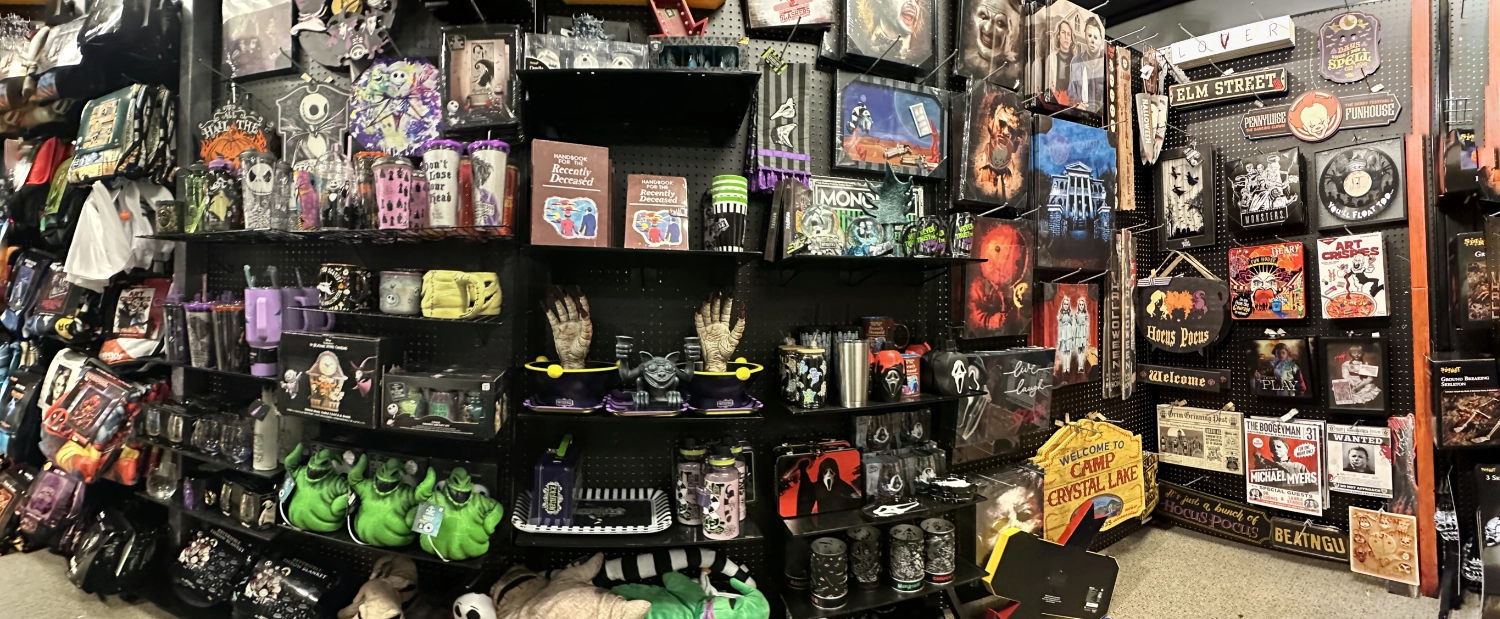
No Fuel, No Fire: A Reminder of Compassion on the Road
Tough Time of Year for Some
The holiday season is here. The air is crisp, the streets are decorated, and the world seems to hum with an unspoken anticipation. Yet, for some, this time of year brings more challenges than cheer. The truth is, while many people are bustling with excitement, others are grappling with stress, grief, or overwhelming responsibilities. It's a tough time for many - and nowhere does that tension manifest more obviously than on the road.
You've seen it before: the driver who suddenly cuts you off, the person crawling below the speed limit in the fast lane, or the one who takes their frustrations out with an aggressive honk. In those moments, it's easy to let frustration spark your own fire. You might find yourself reacting with anger or impatience, escalating an already tense situation. But what if, instead, we chose a different path? What if we remembered that compassion can extinguish the flames of conflict?
A Tough Season for Many
The holidays can amplify feelings of stress and loss. People may be dealing with financial pressures, the loss of a loved one, or the weight of unmet expectations. For some, it's the first holiday season spent alone. For others, it's a time of juggling too many commitments with too little time. These invisible burdens often affect how people behave, even in ways they might not realize.
On the road, stress can quickly translate into errors in judgment or bursts of emotion. The person who just cut you off may have a million things on their mind: a sick family member, a last-minute errand for a child, or simply the exhaustion of trying to do too much in too little time. That doesn't excuse reckless behavior, but it does provide an opportunity for us to choose grace over irritation.
No Fuel, No Fire
Here's a thought: what if we didn't add fuel to the fire? When faced with annoying or even reckless drivers, we have a choice. We can let our emotions take control and feed the flames of frustration, or we can pause, breathe, and let the moment pass. By choosing the latter, we stop the fire before it even starts.
Compassion isn't about excusing bad behavior; it's about understanding that we don't always know what someone else is going through. Your patience in that moment could mean everything. It might even inspire someone else to pause and reflect, creating a ripple of calm in the midst of chaos.
Tips for Staying Calm on the Road
Shift Your Perspective: Instead of assuming the worst about another driver, try to imagine what might be going on in their life. Maybe they're distracted for a reason you'd empathize with if you knew it.
Take a Breath: When you feel frustration building, take a deep breath. A moment of mindfulness can prevent a knee-jerk reaction.
Remember Your Own Imperfections: We've all made mistakes behind the wheel. Extending grace to others is a way of acknowledging our shared humanity.
Focus on Your Safety: Reacting emotionally can lead to unsafe decisions. Staying calm helps you stay in control and ensures everyone gets to their destination in one piece.
Spread Kindness: A simple wave of acknowledgment or letting someone merge can make someone's day. Kindness is contagious.
This Season, Choose Compassion
As you navigate the roads this holiday season, remember that you have the power to make a difference. Each small act of patience and understanding contributes to a better experience for everyone.
No fuel, no fire. Let's be the calm amidst the chaos, spreading peace one mile at a time.
PermalinkThe Role of Technology in Shaping the Modern World
Technology has become an integral part of our daily lives, revolutionizing how we work, communicate, and live. From smartphones to artificial intelligence, it touches every aspect of modern society, transforming industries and creating opportunities for innovation. Understanding technology's role in our world is crucial for adapting to its rapid advancements and leveraging its benefits effectively.
The Evolution of Technology: A Brief Overview
Technology has a long history, evolving from simple tools to the sophisticated systems we rely on today.
- Ancient Innovations: Early humans developed tools for hunting, farming, and building, laying the foundation for technological progress.
- The Industrial Revolution: This period marked a shift to mechanized production, with inventions like the steam engine revolutionizing industries.
- The Digital Age: The advent of computers and the internet in the 20th century transformed communication, commerce, and education.
- The Era of Artificial Intelligence: In recent years, AI and machine learning have taken center stage, automating tasks and analyzing vast amounts of data.
This progression highlights how technology evolves to meet the needs of society, continuously shaping our future.
Key Areas Where Technology Impacts Society
- Communication
- The internet and mobile devices have made global communication instantaneous.
- Tools like video conferencing and social media connect people across the world.
- Emerging technologies like augmented reality (AR) are enhancing virtual communication experiences.
- Healthcare
- Technology has transformed healthcare with telemedicine, wearable devices, and robotic surgeries.
- AI algorithms assist in diagnosing diseases and developing personalized treatment plans.
- Electronic health records streamline patient care and improve outcomes.
- Education
- Online learning platforms and virtual classrooms make education accessible to all.
- Interactive tools like gamification enhance student engagement and understanding.
- Artificial intelligence powers adaptive learning systems that cater to individual needs.
- Business and Industry
- Automation and robotics have increased productivity and reduced costs in manufacturing.
- E-commerce platforms have redefined retail, allowing businesses to reach global audiences.
- Blockchain technology enhances security and transparency in financial transactions.
- Environmental Sustainability
- Renewable energy technologies, such as solar and wind power, reduce carbon emissions.
- Smart grids and IoT devices optimize energy consumption and reduce waste.
- Advanced recycling technologies enable more efficient waste management.
Emerging Technologies to Watch
- Artificial Intelligence and Machine Learning
- AI is driving automation, data analysis, and decision-making in industries ranging from healthcare to finance.
- Machine learning enables systems to improve their performance over time without explicit programming.
- Blockchain
- Beyond cryptocurrencies, blockchain is revolutionizing supply chain management, voting systems, and secure data sharing.
- Quantum Computing
- Quantum computers promise to solve complex problems at unprecedented speeds, with applications in drug discovery, cryptography, and logistics.
- 5G and Beyond
- Next-generation connectivity is paving the way for smart cities, autonomous vehicles, and real-time data transfer.
- Augmented and Virtual Reality
- AR and VR technologies are transforming gaming, education, and training simulations.
The Challenges of Technological Advancement
While technology offers immense benefits, it also poses challenges:
- Privacy Concerns: The widespread use of data analytics raises questions about personal data security.
- Cybersecurity Threats: As we become more connected, the risk of cyberattacks increases.
- Digital Divide: Unequal access to technology creates disparities in education, healthcare, and economic opportunities.
- Ethical Dilemmas: AI and automation spark debates about job displacement and decision-making biases.
Addressing these challenges requires collaboration between governments, businesses, and individuals to ensure technology is used responsibly and inclusively.
How to Stay Updated with Technology
- Follow Industry News: Websites, blogs, and tech magazines offer insights into the latest trends.
- Learn Continuously: Online courses and certifications help individuals stay competitive in tech-driven industries.
- Adopt Emerging Tools: Experiment with new apps, software, and gadgets to understand their applications.
- Engage in Discussions: Forums and tech communities provide a platform for knowledge exchange and networking.
Conclusion: Embracing the Technological Future
Technology continues to shape our world in profound ways, from improving quality of life to driving economic growth. While it presents challenges, the opportunities it offers far outweigh the risks when managed responsibly.
As we stand on the brink of further advancements, embracing technology with a focus on innovation, ethics, and inclusivity will ensure that its benefits are accessible to all. By staying informed and adaptable, we can harness the power of technology to build a better future for ourselves and generations to come.
PermalinkEssential Insights: The Impact of Website Performance on User Experience

Monitoring your website's performance is crucial for maintaining an optimal user experience and operational efficiency. Regular checks help identify issues before they escalate, ensuring smooth and reliable site functionality. Effective monitoring also highlights areas for improvement and aids in strategic decision-making. In this article, cryan.com explores the benefits that come from keeping a close watch on your website's performance.
Early Detection of Errors and Anomalies
Regular monitoring of your website allows you to catch errors and irregular behaviors as they arise. This proactive approach can prevent minor issues from becoming significant problems that could lead to downtime or a poor user experience. By identifying these anomalies early, you can maintain the reliability and trustworthiness of your site, ensuring that users do not encounter frustration or barriers during their visit. Consistent monitoring also helps in maintaining a seamless operational flow, contributing to a stable online presence.
Uncovering Improvement Opportunities
Another significant advantage of monitoring your website is the ability to identify areas that need enhancement. Whether it's a cumbersome navigation process or outdated content, understanding where your website falls short can guide you to make necessary improvements. This continuous loop of feedback and action fosters a culture of excellence and keeps your website ahead of competitors. Regularly assessing performance metrics and user feedback allows you to refine strategies and optimize user interactions on your site.
Optimizing Loading Times and Performance
The speed of your website significantly impacts user satisfaction and SEO rankings. Monitoring tools help you track page loading times and other critical factors that influence the overall speed and performance of your site. By identifying bottlenecks in content delivery or inefficient scripts, you can take corrective actions to enhance the speed of your website. Faster loading times improve the user experience, reduce bounce rates, and increase the likelihood of visitors staying longer on your site.
Streamlining Reporting with Advanced Tools
Incorporating modern PDF tools into your website performance monitoring strategy can streamline the process of reporting and analysis. These tools enhance the processes involved in PDF creation, making it easy to convert detailed performance reports, analytics, and key insights into universally accessible PDF formats. This capability makes it simpler for different teams to collaborate, analyze, and act on data, thereby accelerating the implementation of website performance improvements. By leveraging these advanced features, you ensure that all stakeholders have timely access to critical information in a format that is easy to use and share.
Tracking Visitor Analytics Over Time
Monitoring visitor statistics such as numbers and page views over time provides valuable insights into the effectiveness of your marketing strategies and the overall appeal of your content. This data allows you to understand key trends, anticipate future behaviors, and make informed decisions about content creation and marketing initiatives. With regular analysis of these metrics, you can adjust your approach to better align with the preferences and interests of your audience. These insights ultimately allow you to create a more engaging website experience that resonates with visitors, fostering increased engagement and loyalty. As a result, your site becomes a more effective tool for building long-term relationships with users.
Measuring and Enhancing User Experience
A core aspect of website monitoring is evaluating the user experience to ensure a seamless and enjoyable interaction. Tools that track how users navigate and engage with your site can highlight both the strengths of your current design and areas that may need improvement. This data is essential for fine-tuning elements that might not be as engaging or may inadvertently cause frustration among visitors. Enhancing the user experience can lead to higher satisfaction levels, extended user engagement, and ultimately, an increase in conversions from visitors to customers. By focusing on the user experience, you create a website that not only attracts visitors but also encourages them to return.
Monitoring your website's performance is an ongoing process that offers substantial benefits. It ensures that potential problems are addressed promptly, improves the overall user experience, and supports data-driven decisions. Regularly analyzing performance metrics is vital for maintaining a competitive edge in the digital landscape. Implementing a robust monitoring strategy is key to the long-term success of your website.
PermalinkThe Benefits of Blogging for Health Organizations: Driving Traffic and Engagement

Maintaining a strong online presence is crucial for health organizations looking to connect with their communities. One of the most effective ways to do this is through blogging, which offers a range of benefits for the organization and its audience. By regularly sharing valuable insights and advice, health organizations can drive website traffic and foster meaningful engagement. The benefits of blogging for health organizations extend far beyond mere website clicks. They help build trust, educate readers, and enhance the organization's reputation as a reliable resource. So, let's explore how blogging can be a powerful tool for health organizations aiming to grow their audience, improve their reach, and connect with people seeking trusted health information.
Building Trust with Readers: A Key Advantage
Building trust with readers is essential for health organizations, and blogging is a great way to establish this credibility. By sharing accurate, research-backed information, organizations can position themselves as reliable sources that readers can confidently turn to. Addressing relevant topics that matter to your audience while staying informed about Google trends in your industry helps ensure content is timely and valuable.
When readers recognize a consistent commitment to quality, they're more likely to return, rely on your expertise, and even recommend your content to others. Over time, this level of trust nurtures a loyal following and strengthens the organization's presence. Ultimately, it fosters a relationship where readers view the blog as a go-to resource for health questions and concerns.

There are many benefits of blogging for health organizations
Driving Consistent Traffic Through SEO-Friendly Content
Consistent traffic is one of the primary benefits of blogging for health organizations. That is especially true when posts are optimized for search engines. Health organizations can enhance their visibility by using relevant keywords, allowing people actively searching for health advice to discover their content. Regular, high-quality posts improve rankings, attracting a steady flow of new visitors.
To further increase engagement, unleash your creativity in the blog's design to make it visually appealing and easy to navigate. When readers enjoy a seamless, attractive experience, they're more likely to explore other pages and return for future content. With the right SEO strategies, a health organization can consistently increase traffic, making the blog valuable for reaching and educating a wider audience.
Boosting Patient Engagement with Interactive Topics
One impactful benefit of blogging for health organizations is boosting patient engagement. By addressing popular health topics and common patient concerns, a blog can serve as an interactive platform that actively involves readers. Incorporating features like polls, quizzes, and discussion prompts encourages participation, making health information more accessible and relevant to users.
Also, especially for addiction treatment centers, interactive content can be crucial in educating patients about treatment paths, providing self-assessments, and offering valuable recovery resources. Regularly publishing informative blog posts tailored to patient needs drives engagement and improves SEO rankings, helping patients find the information they need more easily. In addition, to fully maximize this potential, it's essential to optimize your rehab center website with SEO strategies specific to addiction treatment. Doing so will increase your online visibility and attract more visitors actively seeking support.

Blogging may establish you as a trustworthy resource and expand your reach
Expanding Reach with Social Media Sharing
Social media sharing is a powerful way for health organizations to expand their reach beyond regular website visitors. Blog posts can be easily shared across platforms like Facebook, Twitter, and LinkedIn, allowing health information to circulate widely and attract a new audience. With every share, the blog's content has the potential to go viral, drawing in individuals who might not otherwise find it.
These social media visitors often click through to the organization's website, increasing traffic and engagement. By creating informative and shareable blog content, health organizations can maximize their visibility, foster community connections, and reach those needing reliable health resources, further establishing their brand as a trusted source in the digital health space.
Benefits of Blogging for Health Organizations: Showcasing Health Programs and Services Effectively
Blogging provides an excellent platform for health organizations to showcase their programs and services to a broader audience. By writing about available services, organizations can raise awareness within the community and help potential patients understand the range of resources offered. Educational posts can dive into details, explaining how specific programs can benefit different health needs. Additionally, featuring real-life success stories or patient testimonials allows readers to see the positive impact firsthand.
To keep content professional and engaging, consider using tools to improve your writing and ensure information is clear and accessible. This approach informs and inspires readers, encouraging them to further explore the organization's services and trust it as a valuable healthcare provider.
Educating the Community on Health and Wellness Topics
Educating the community on health and wellness topics is one of the most impactful benefits of blogging for health organizations. By covering essential areas like mental health, nutrition, and fitness, health organizations can empower readers to make informed lifestyle choices. Each post is a practical resource, breaking down complex topics into easy-to-understand information that helps readers navigate their health journeys.
Using clear and accessible language ensures a broad audience can benefit from shared insights. When health organizations prioritize content that addresses real community concerns, they don't just provide information. Rather, they create a trusted space where individuals feel supported and motivated to improve their well-being.

You can engage with your community and educate people on health topics
Enhancing Search Engine Ranking with Fresh, Unique Content
Enhancing search engine ranking is key to maintaining fresh, unique content on a health organization's blog. Search engines favor websites regularly updated with relevant information, rewarding them with higher visibility in search results. By consistently publishing new posts on topics that matter to the community, health organizations stay current and boost their chances of being discovered by new audiences.
Fresh content signals to search engines that the site is active and valuable, improving its ranking over time. This approach keeps the website dynamic and engaging, drawing in more visitors who rely on the blog as a reliable, up-to-date health resource.
Unlock the Full Potential of Blogging for Health Impact!
By understanding the benefits of blogging for health organizations, you can drive traffic, engage your community, and establish a trusted presence online. With well-crafted, SEO-friendly content, health organizations can enhance their reach. You can also create a meaningful impact by educating and supporting readers in their health journeys.
Meta description: Explore the benefits of blogging for health organizations: boost traffic, engage audiences, and share valuable health insights!
PermalinkNavigating Career Changes in Uncertain Times
Lessons from Who Moved My Cheese?

IN 2024, Chapter 11 filings have become increasingly common, leaving employees in a state of uncertainty. When a company files for Chapter 11 bankruptcy, it restructures to stay in business, which often means changes to roles, department reorganizations, and sometimes layoffs. This can be unsettling and disruptive. Spencer Johnson's Who Moved My Cheese? offers timeless wisdom for dealing with these sudden changes in our professional lives and provides a framework to navigate them with resilience and adaptability.
Embrace the Inevitability of Change
Who Moved My Cheese? teaches us that change is inevitable. In the story, characters Hem and Haw represent two very different approaches to dealing with change: while Hem resists, Haw adapts and explores new options. In a similar vein, when a company files for Chapter 11, it's an external change beyond an employee's control. While the uncertainty is unsettling, resisting the change won't stop it from happening. Instead, accepting the new reality and looking for ways to adapt within this environment-whether by upskilling, taking on new responsibilities, or seeking a fresh perspective-helps build resilience and prepares you for whatever lies ahead.
Don't Hold On to "Old Cheese"
One of the core concepts in Johnson's book is the idea of "letting go of the old cheese"-in other words, moving on from past success and comfort. In the context of Chapter 11 restructuring, "old cheese" might look like clinging to the way things used to be, or holding onto outdated roles and processes. During bankruptcy proceedings, companies may trim down departments or eliminate roles altogether, which can be a tough pill to swallow. However, it's crucial to let go of attachments to outdated roles or processes and to be open to new opportunities within the organization or even beyond it. By staying agile and considering the broader career landscape, you'll be ready to pursue new paths if they arise.
Look for "New Cheese"
Once you've accepted that the "cheese" has moved, the next step is to find new opportunities. When a company is going through Chapter 11, there may be an uptick in unexpected opportunities as departments realign and job functions shift. Use this time to assess your skills and identify new areas within the organization that need support. Networking internally with other teams or exploring emerging roles can help you gain visibility and potentially lead to new career paths. Taking proactive steps, even during times of uncertainty, can make you a valuable asset to the organization as it repositions itself for recovery.
Prepare for the Next Change
Chapter 11 is a signal that the business climate is unpredictable, and therefore it's essential to be prepared for the next change. In Who Moved My Cheese?, Johnson emphasizes the value of "smelling the cheese often" to anticipate shifts. Practically, this means keeping a pulse on industry trends, company performance, and personal career goals. If the company emerges from Chapter 11 stronger, you'll have prepared yourself well to contribute to a fresh chapter. If further instability follows, you'll be better equipped to seek opportunities elsewhere. Staying agile, keeping your skills relevant, and having a network in place makes navigating future changes more manageable.
Key Takeaways for Career Planning in Chapter 11 Times
Accept Change Proactively: Recognize that change is beyond your control, and be open to it. The faster you accept it, the quicker you can adjust.
Let Go of the Past: Don't hold onto the old way of doing things. Be ready to adapt to new processes, roles, or even a new career direction if needed.
Seek Opportunities, Even in Uncertain Times: Chapter 11 may open new avenues internally, so look for ways to make yourself indispensable by identifying where your skills can be applied in emerging areas.
Prepare for Future Changes: Use this experience as a learning opportunity. Keep your skills sharp, stay connected to your network, and remain open to new paths.
The core message of Who Moved My Cheese?-that adaptability and a forward-focused mindset can turn challenges into opportunities-has never been more relevant. Chapter 11 filings are daunting, but they also serve as a reminder that the ability to shift gears and pivot is one of the most powerful skills you can have in your career toolkit.
PermalinkA Look at the Latest Luxury Car Tech
Smart technology leading the way

Photo by Hyundai Motor Group : https://www.pexels.com/photo/interior-of-hyundai-palisade-13177958/
A generation ago, those who could afford a high-end motor vehicle wowed their families and friends with gadgets like heated seats, cruise control and CD multi changers. Today, features like these either come as standard even on base models or have become obsolete. Evolving technology has an impact on every aspect of our lives, and that includes the?101 minutes per day?that the average American spends behind the wheel of the car.
Smart technology leading the way
Today, our phones are smart, our homes are smart and out TVs are smart. We shouldn't be surprised, therefore that when you look through the?top rated luxury cars on the US market, they also boast all sorts of smart technology. Intelligent systems can be used to improve driver comfort, keep occupants safe and optimize vehicle performance and fuel economy.
USB or Bluetooth connectivity allows the car to link with your smartphone. Effectively, this means everything on your phone can be mirrored on the car screen. As well as giving you access to all your favorite music on the go, it makes navigation far easier, as you can plan your route on your phone before setting off.
Smart systems also monitor your driving habits and preferences, automatically setting the seat, mirrors and climate control. They can even?adjust engine settings?in line with your driving style to minimize emissions and improve fuel efficiency.
Perhaps the most profound aspects of smart tech surrounds driver safety. Lane departure warnings are just the first step on the path towards fully automated vehicles that will ultimately remove the risk of human error from our roads and will completely transform driving.
Ultimate personalization with biometrics
Keyless entry and starting systems are rapidly becoming the standard in new cars and trucks. But some of the luxury carmakers are taking it to the next level in their premium vehicles by adding biometric security to the mix.
Fingerprint recognition is the most common type of biometric identification, and has been a security feature on smartphones and laptops for the past 10 years. Hyundai was the first car manufacturer to introduce the technology in its range-topping Santa Fe SUV. The driver uses a fingerprint reader both to unlock the car and to start the engine.
Mercedes uses fingerprint sensors for specific user settings such as the seat position and ambient lighting, while Bentley uses biometric sensors to secure the storage area between the seats in its Bentayga SUV.
Perhaps the most exciting use of biometrics, though, is implemented by Tesla. This is the first manufacturer to explore facial recognition to access the vehicle. Tesla uses the same technology to allow the car to literally watch the driver and take action in case he or she loses consciousness while driving.
Ultimate luxury in the ultimate vehicles
All the above are examples of luxury vehicles showcasing pioneering technology. Just like those heated seats and surround sound systems, these are features that we will take for granted in 10 to 20 years' time.
But the manufacturers whose cars command the very highest price tags like to include features that really push the boat out. Perhaps the best example of this is Rolls Royce. The 1965 Phantom was the first to feature a refrigerator and drinks cabinet, while the same year, the company launched its new Silver Shadow, which had built-in umbrellas in the doors.
Today's latest Rolls Royce cars have all this and more. The Ghost features the same monogrammed umbrellas that have been around for almost 60 years, but now, the storage area features a smart drainage system that ensures the umbrella is dry next time you use it. The Cullinan has an in-seat champagne chiller complete with glasses. But for the ultimate luxury feature, you'll need the range-topping Phantom. This features a?starlight headliner. The leather headlining is painstakingly perforated to accurately show the celestial constellation of your choice, using as many as 1,600 fiber optic lights set at subtly different angles.
PermalinkData Governance 101
Small Business Tips for Long-Term Flourishing

Data has become a critical asset, presenting opportunities and challenges for small businesses. The rapid pace of digital transformation has made data governance an essential core element in maintaining business integrity and supporting growth. As we move toward 2025, the focus on data governance has intensified, urging business leaders to adopt strong data management practices. Small enterprises can protect their assets, improve operational efficiency, and build stronger customer relationships. This article explores the critical aspects of data governance tailored for small businesses, providing insights to help secure a competitive advantage in a fast-evolving market.
Fortifying Your Business with Data Security and Privacy
Ensuring robust data security and privacy in your small business is crucial. Adopting a Zero Trust architecture guarantees that every data access request is meticulously verified, whether it comes from within or outside your organization. This strategy significantly reduces the risk of unauthorized access. Moreover, integrating advanced encryption technologies can make your sensitive information unreadable to cybercriminals, thereby minimizing data breaches. Regular security audits and employee training further bolster your defenses, helping to identify vulnerabilities and educate your team about cyber threats like phishing.
Defining Success in Data Governance
To evaluate the success of your data governance framework, align your key performance indicators (KPIs) with your business goals. Focus on metrics such as data quality scores and compliance levels to ensure your governance efforts are practical. Regularly tracking these metrics and sharing insights with stakeholders promotes transparency and accountability. Conducting maturity assessments can highlight your strengths and areas for improvement, guiding your ongoing enhancement efforts. This structured approach supports growth and risk management and fosters a culture of governance within your organization.
Advancing Data Protection with Cybersecurity Education
Pursuing a degree in cybersecurity equips you with the skills to protect your business's data effectively. An online cybersecurity degree offers the flexibility to balance studies with running your business. This educational path provides practical experience in designing and managing security systems, which are crucial for safeguarding sensitive information. With roles like Information Security Analyst projected to grow significantly, this field protects your data and offers a rewarding career opportunity. Start researching the accreditation of online cybersecurity degrees today.
Elevating Customer Engagement with Smart Data Practices
Data governance is a powerful tool for refining your customer engagement strategies. Organizing and managing customer data effectively allows you to tailor marketing messages that speak directly to specific customer segments. This precision boosts engagement and conversion rates. For instance, analyzing customer behavior data helps you anticipate needs and deliver timely content, building loyalty. Real-time data insights lets you optimize your marketing spend, focusing on the most effective channels and messages.
Steering Through Data Governance Regulations
Understanding and implementing data governance regulations is essential for small businesses aiming to maximize their data's potential. Key frameworks like the General Data Protection Regulation (GDPR) and the California Consumer Privacy Act (CCPA) lay the foundation for protecting consumer privacy and ensuring compliance. Adhering to these regulations avoids legal issues and builds consumer trust by demonstrating a commitment to ethical data practices. As decentralized data governance models emerge, staying informed and adaptable is crucial for maintaining competitiveness and innovation.
Equipping Employees with Data Mastery
Training your team in data handling and entry techniques is vital for maintaining data integrity. With data breaches on the rise, comprehensive training transforms potential vulnerabilities into your strongest defense. This proactive approach ensures compliance with regulations like GDPR and CCPA and enhances your organization's security culture. By investing in training sessions focused on data privacy and protection, your workforce becomes adept at recognizing and mitigating risks, safeguarding sensitive information, and supporting informed decision-making.
Keeping Data Ownership Policies Up-to-Date
Regularly updating your data ownership policies is crucial in a rapidly changing business environment. This ensures compliance with the latest regulations and leverages data for innovation and growth. As your business expands into new markets, you may encounter unique data regulations requiring adjustments in data access controls. Additionally, integrating new software solutions may necessitate changes to existing governance frameworks, ensuring they enhance rather than hinder operational efficiency. Keeping your data governance practices current secures compliance and sustains a competitive edge.
In a digital age where data is the lifeblood of small enterprises, mastering data governance transforms potential chaos into structured growth. It's no longer a mere operational necessity but a dynamic force driving innovation and resilience. By fostering an environment where data is meticulously governed, you shield your business from risks and unlock unprecedented opportunities for engagement and expansion. The path to mastery in data governance lies in adherence and an active pursuit of excellence, ensuring that as digital landscapes evolve, your business is always a step ahead.
Dive into the fascinating world of history, technology, and more at cryan.com, where every visit uncovers a new story or insight waiting for you!
PermalinkDell Laptop Keyboard Layout
Weird Connection with the Enter Key
If you're a frequent laptop user, you're probably familiar with the standard keyboard layout that most manufacturers follow. However, something peculiar caught my eye when using a Dell laptop?the "Pipe/Slash" (| / ) key is directly connected to the Enter key. This unconventional setup is unique to Dell, as I've yet to encounter this odd pairing on other laptops.

I found this puzzling for a couple of reasons:
Layout Inconsistency: No other key on the Dell laptop keyboard seems to have this kind of pairing. The placement feels a bit cramped and unintuitive compared to other laptops, where the "Pipe/Slash" key typically stands alone near the right Shift key.
Potential Typing Confusion: The proximity to the Enter key can lead to unintentional presses, which becomes frustrating for anyone used to a standard layout. For people like me who often type in programming languages or work in environments where the
|orsymbols are frequent, this becomes a noticeable inconvenience.
What's even more bizarre is that I couldn't find any official documentation on Dell's website or elsewhere to explain why they chose this layout. This lack of clarity has left me scratching my head. Is this a design oversight, or is there a specific use case that Dell engineers had in mind when designing this keyboard?
I'd love to hear from anyone who might have insight into why Dell decided to connect the "Pipe/Slash" key with the Enter key. If you've encountered this odd layout or have an explanation, drop me a line!
Until then, this remains one of those quirks that I'll continue to navigate around?quite literally.
Have you seen other strange keyboard layouts? Feel free to share your thoughts in the comments below!
PermalinkSpirit Halloween: Haunted Mansion
Local Store Didn't Have Much
Today, we visited Spirit Halloween in Natick, Massachusetts, after hearing they had received their 2025 inventory, including some new Disney Haunted Mansion items. My daughter and I decided to check out the store on the first day of September, hoping to get ahead of the crowd before all the good stuff sold out.
However, we were disappointed to find that there wasn't anything new or anything that felt like a must-have.
Haunted Mansion Area 2024
The Haunted Mansion supplies are usually kept together with other movies.

View a larger image of the Halloween Display.
You had to search for Haunted Mansion items, they were not put in a nice little section like it was back in 2024.
Haunted Mansion in 2023

This is the Spirit Halloween display in 2023. This was taken mid-October 2023.
Four thing We Learned
- During our visit, nobody asked us if we had any questions. The workers were busy putting things back were they belong and stocking the shelves. They did have plenty of large Decorations available - nothing Haunted Mansion related.
- Online store did have more options - its very possible that the store didn't stock all their inventory. The Haunted Mansion area was a bit disorganized. It seems that the Beetlejuice Beetlejuice movie is the most popular items.
- I did see a couple of new Fleece blankets that were cool - Portrait Fleece Blanket and The Haunted Mansion Map. I think the Haunted Mansion map blanket would be very cool to own.
- The 24 Inch The Haunted Mansion Fred Tombstone is a good deal at $49.99. I purchased it a few years ago and it is still going strong. The stakes that came with it has been missing but I have found some standard stakes that work well.
Summary
If you are interested in the Disney Haunted Mansion collection at Spirit Halloween, your better off checking the website. I would recommend at least visiting your local store to see what things are popular and some cool Halloween items.
PermalinkHow CRM Systems Can Drive Innovation in Customer Loyalty Programs and Reward Strategies
Specific details that can help you out.

CRM systems are crucial parts of any business that wants to improve. Therefore, we want to discuss how CRM systems can drive innovation in customer loyalty programs and reward strategies. By using such systems, you can be sure that your loyalty programs are enticing. Let's go over details that can help you out.
Personalization and segmentation
You can't overlook the importance of creating loyalty and reward programs when using digital innovation to find business success. CRM systems revolutionize customer loyalty programs through advanced personalization and segmentation. These systems allow businesses to craft personal loyalty programs by leveraging detailed customer data. This high level of customization means rewards are relevant and more compelling to each customer. For instance, a CRM can track purchasing patterns and engagement levels, enabling tailored offers that resonate with unique interests. This targeted approach boosts program effectiveness, as customers are likelier to engage with rewards. Especially rewards that align with their personal preferences enhance overall loyalty and satisfaction.

Personalization is one of the ways how CRM systems can drive innovation in customer loyalty programs and reward strategies
Better customer insights
Businesses can provide tailored and enticing rewards by analyzing data to identify trends and preferences. For instance, by knowing a customer's purchasing patterns and past interactions, businesses can provide customized rewards that have a stronger impact on their target market. With this kind of insight, companies can provide incentives that are not only pertinent but also more likely to improve customer retention and satisfaction. That, in turn, builds better, longer-lasting relationships with their customers.
Automated reward systems
CRM systems streamline loyalty programs by automating the entire reward process, from tracking points to distributing rewards. This automation minimizes manual effort and reduces the risk of errors, ensuring that rewards are allocated promptly and accurately. With automated systems, businesses can easily manage complex reward structures and provide a seamless experience for customers. Timely and precise reward distribution enhances customer satisfaction by ensuring that earned benefits are delivered as expected. This efficiency not only boosts operational effectiveness but also strengthens customer trust and engagement, making the loyalty program more appealing and effective in retaining customers.
How CRM systems can drive innovation in customer loyalty programs and reward strategies
These technologies let organizations more accurately predict their customers' wants and preferences by studying past data and present tendencies. With this kind of foresight, businesses may modify their incentive systems and loyalty programs proactively, in line with emerging trends, instead of responding reactively to changes as they happen. Because of this, companies can maintain an advantage over rivals by providing prompt and pertinent rewards. Thus, predictive analytics improves loyalty program strategic planning, increasing participant engagement and satisfaction.

Such systems can provide you with valuable information
Multi-channel integration
CRM systems can drive innovation and are important when choosing the right SEO company for your small business. They enhance customer loyalty programs through multi-channel integration by unifying data from diverse touch points such as online, in-store, and mobile interactions. This comprehensive view of customer activity allows businesses to create consistent and cohesive loyalty strategies across all channels. By consolidating information from various sources, CRM systems ensure that rewards and engagement efforts are harmonized, providing a seamless customer experience. Regardless of how or where clients connect with the business, this integrated strategy helps to give targeted offers and preserve consistency in loyalty campaigns. Consequently, companies can enhance client interactions and promote increased pleasure and loyalty.
Feedback and improvement
CRM systems are important in enhancing customer loyalty programs by systematically gathering and analyzing customer engagement and reward feedback. This process allows businesses to gain valuable insights into the effectiveness of their loyalty initiatives and identify areas that require improvement. By leveraging this feedback loop, organizations can create a valuable connection with their customers, ensuring that their loyalty programs remain relevant and effective. Regular updates to the program, driven by real customer experiences, address potential issues and keep the offerings aligned with customers' evolving expectations. This proactive approach ultimately boosts customer satisfaction and strengthens long-term loyalty, thereby increasing customer lifetime value.
Gamification strategies
How can CRM systems drive innovation in customer loyalty programs and reward strategies? By adding gamification components, the process of earning rewards becomes more dynamic and interesting. Gamification uses elements of games, like leaderboards, challenges, and point systems, to increase customer satisfaction with loyalty programs. By introducing a competitive and enjoyable element, this strategy encourages customers to interact more frequently and raises their happiness overall. CRM systems assist companies in developing dynamic loyalty programs that draw in and keep consumers by combining these qualities, which make the reward experience both inspiring and memorable. Here are some ways you can approach this using things such as:
- Achievement badges
- Progress bars
- Quests and missions
- Referral contests
- Tiered reward levels
Cross-selling and upselling opportunities
CRM systems unlock significant cross-selling and upselling opportunities within loyalty programs by leveraging detailed customer data. These systems identify opportunities to recommend additional products or premium services that align with individual preferences by analyzing purchasing history and engagement patterns. For instance, in the retail industry, CRM systems can suggest complementary products, like offering a customer who bought a camera an exclusive discount on accessories. In the hospitality industry, hotels might use CRM to provide guests with room upgrades or discounts on spa services based on their previous stays. Targeted rewards, such as exclusive offers or bonus points for related purchases, can encourage customers to explore new products or upgrade their current choices. This personalized approach enhances the customer experience, drives higher spending, and increases each customer's overall value, leading to a more profitable and dynamic loyalty program.
At the same time, for the moving industry, moverstech.com specializes in providing CRM solutions tailored specifically to the needs of moving businesses. These systems track customer interactions and service preferences and help businesses offer targeted rewards, such as discounts on packing services or referrals to related services like storage. This personalized approach enhances the customer experience, drives higher spending, and increases each customer's overall value. By utilizing this CRM system, moving companies can integrate cross-selling and upselling strategies into their loyalty programs, resulting in a more profitable and dynamic business model.
Real-time analytics and reporting
Customer loyalty programs can be revolutionized using real-time analytics and reporting from CRM systems. These offer rapid insights into program effectiveness. This feature allows businesses to monitor important data like customer feedback, award redemption rates, and engagement levels. With real-time data, businesses can quickly spot patterns, identify problems, and modify loyalty programs. This agility enables businesses to optimize their programs continuously, ensuring they remain effective and relevant. By acting on up-to-date information, companies can enhance the customer experience, boost satisfaction, and streamline success even better.

You can also recommend other services and products with such systems in place
Make the best of CRM systems
Using CRM systems to make the most to improve your business will help you engage with your customers. By explaining how CRM systems can drive innovation in customer loyalty programs and reward strategies, we hope we have helped you out. Find out how these systems can help you in loyalty programs and rewards.
PermalinkAbout
Are you looking for new and innovative ways to improve your business? Look no further! In these blog series, we'll be sharing some interesting tips and tricks that can help take your business to the next level. From marketing strategies to productivity hacks, we've got you covered. So, let's dive in and explore some of the most effective ways to grow and succeed in the world of business.
Check out all the blog posts.
Blog Schedule
| Thursday | BBEdit |
| Friday | Macintosh |
| Saturday | Internet Tools |
| Sunday | Open Topic |
| Monday | Media Monday |
| Tuesday | QA |
| Wednesday | SnagIt |
Other Posts
- No Fuel, No Fire: A Reminder of Compassion on the Road
- Don't Make Me Think
- Revolutionize Your Content Strategy
- Balloons at Wegmans
- First Amazon Purchase
- Christmas Story on Christmas Day
- College Grads: What you should consider when selecting a job
- Tips for having a Take Your Son/Daughter to Work day.
- Best Parental Control Software
- Essential Insights: The Impact of Website Performance on User Experience
- Blogging Communities Building Connections and Collaboration
- msoutlookonline.net
- Facebook API Errors
- 5 Tips To Buy Second Hand Machinery
- Tips Grow Business Instagram